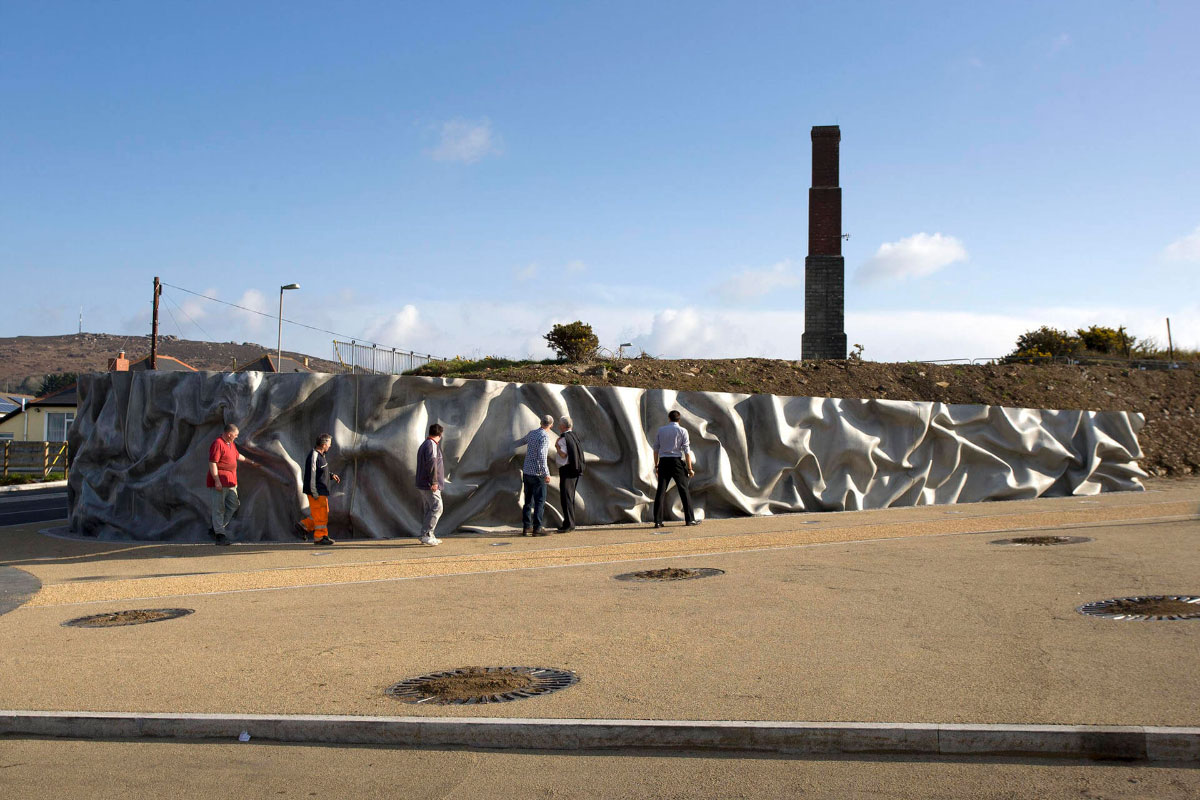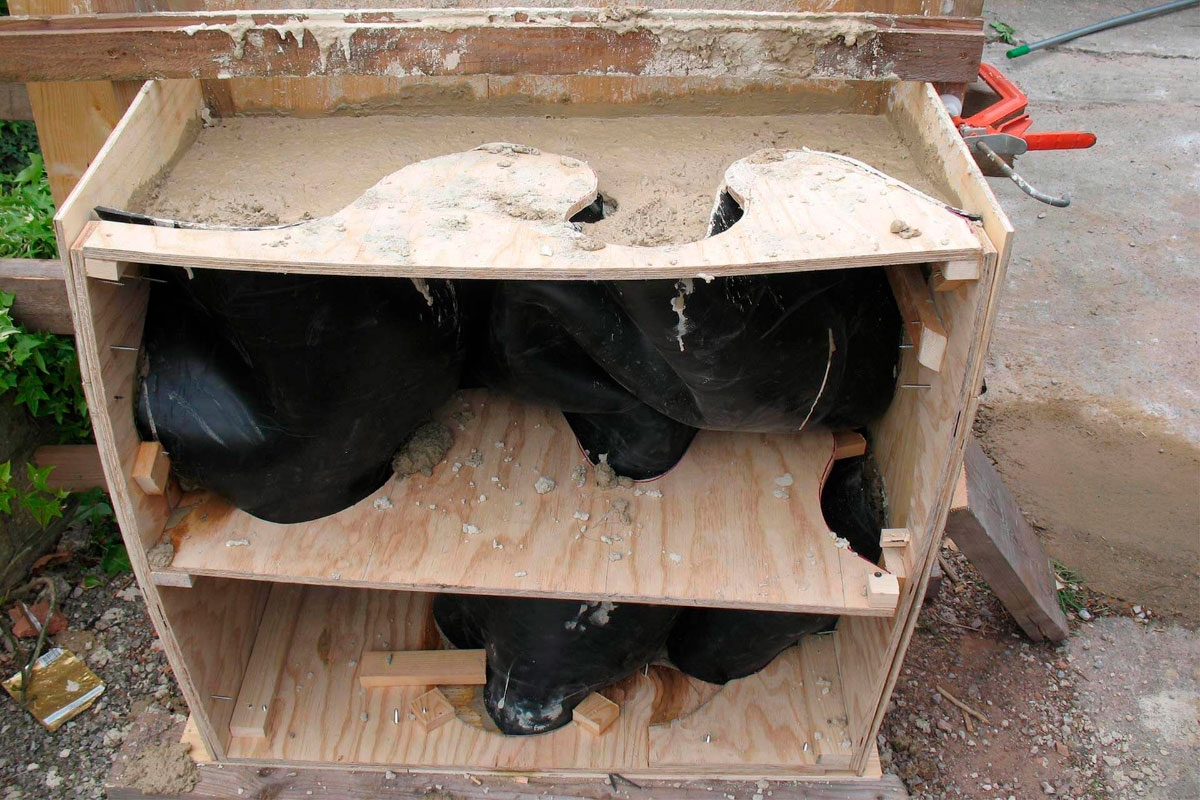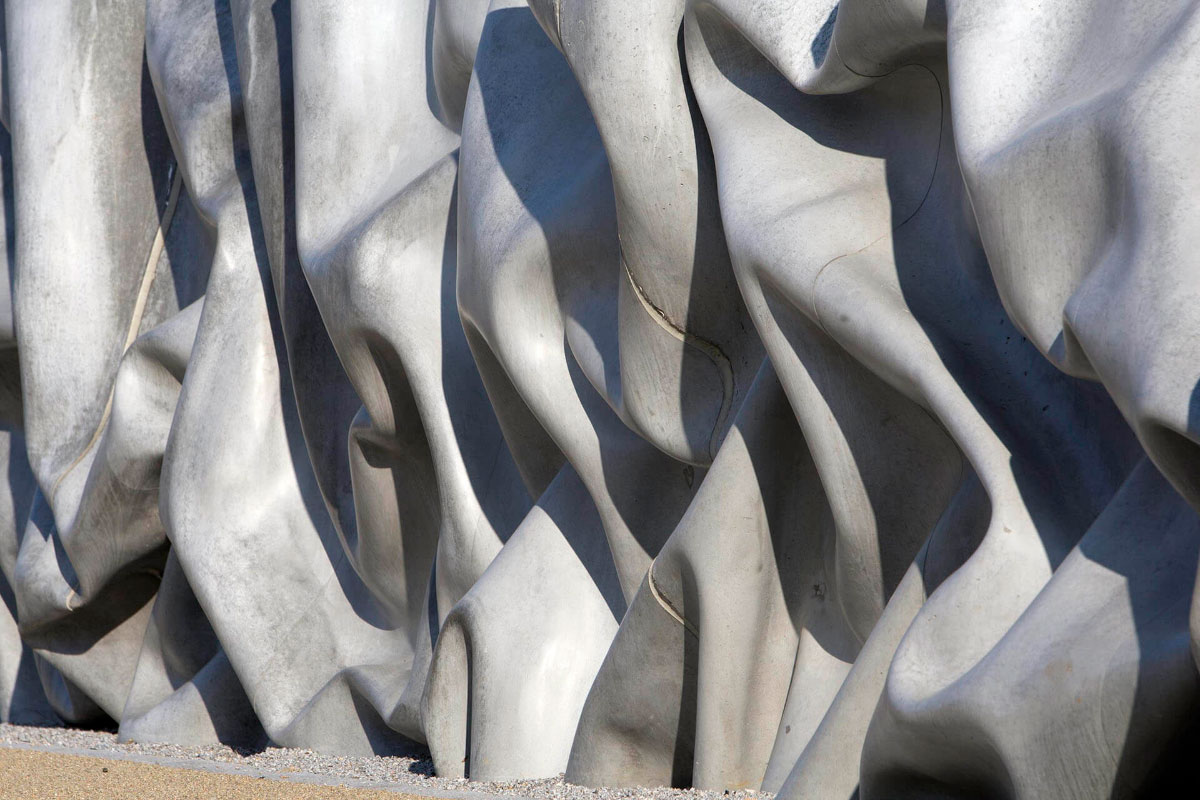Textile formwork is an innovation in the construction industry that makes it possible to create complex and unique shapes, curved structures and irregular contours. It is a technique that conforms to any desired shape through the use of flexible fabrics. Geotextiles, known for their durability and low cost, are the most common materials that make up these fabrics.
One of the main advantages of these textiles is their lightness and small dimensions, which facilitates their handling. In addition, textile formwork allows significant concrete savings of up to 40% compared to equivalent prismatic profiles, which results in sustainability and reduced construction costs. This results in a softer and more fluid appearance of the concrete, almost as if it were a flexible material.

However, the structural stability of these constructions is ensured by careful design combining rigid supports with a flexible membrane resistant to tensile forces. In addition, the use of specific frames and supports provides the necessary rigidity to withstand the forces generated by the concrete, prevent deformation and ensure safety during construction.

The texture of the finish depends to a large extent on the surface that comes into contact with the concrete. The introduction of high-strength multifilament synthetic materials greatly improves this process. Excess moisture is removed by pressure; by pumping the concrete, this pressure forces the excess water to drain quickly through the fabric, ensuring optimum setting.
Images: Walter Jack Studio.
By Raúl Soriano, senior modeller in Amusement Logic’s Architectural Dept.






